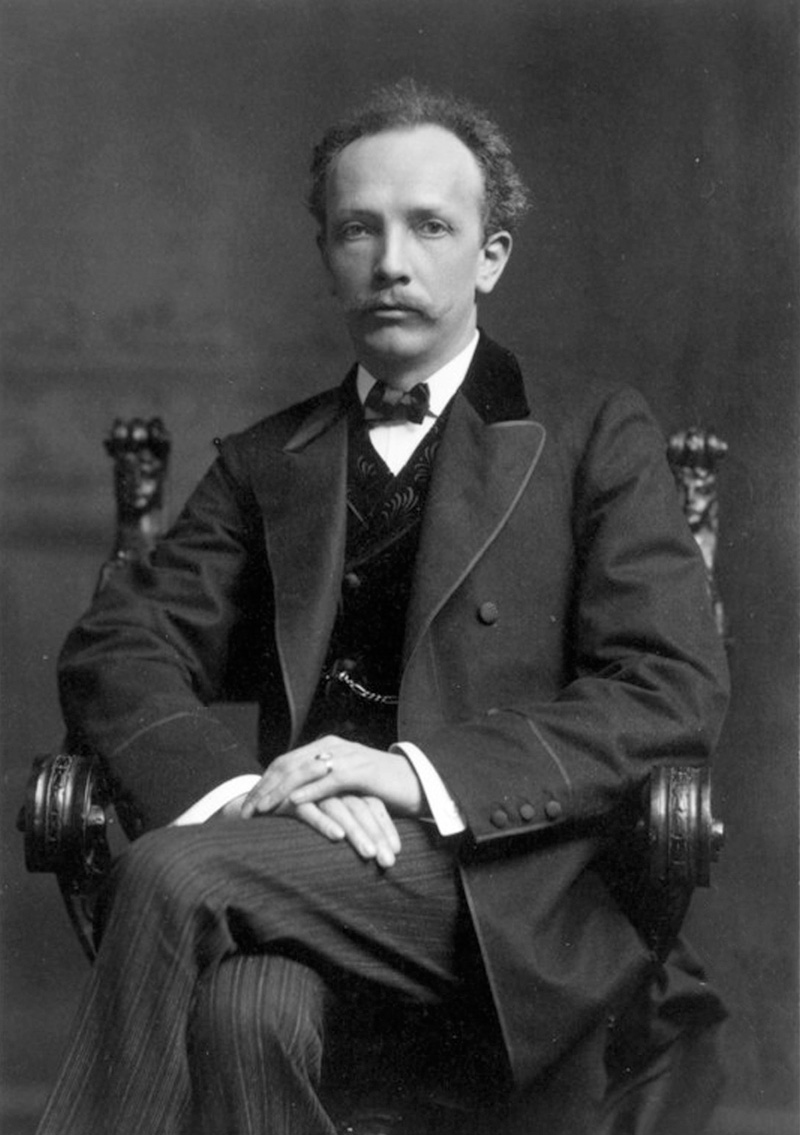Richard Strauss

- Born: June 11, 1864 in Munich, Germany
- Died: September 8, 1949 in Garmisch-Partenkirchen, Germany
Tod und Verklärung ("Death and Transfiguration"). Op. 24
- Composed: 1888-89
- Premiere: June 21, 1890 in Eisenach, conducted by the composer
- Instrumentation: 3 flutes, 2 oboes, English horn, 2 clarinets, bass clarinet, 2 bassoons, contrabassoon, 4 horns, 3 trumpets, 3 trombones, tuba, timpani, tam-tam, 2 harps, strings
- CSO notable performances: First Performance: March 1899, Frank Van der Stucken conducting. Most Recent Performance: February 2008, John Adams conducting. Other: April 1904, Richard Strauss conducting.
- Duration: approx. 25 minutes
Richard Strauss completed Death and Transfiguration just in time for his 26th birthday. It is a remarkable achievement both in conception and execution for such a young musician, especially since composition was really just a second career for Strauss at the time. By 1887, Strauss was one of the fastest-rising stars in the European conducting firmament, having taken up his first podium engagement, at the tender age of 19, as assistant to the renowned Hans von Bülow at Meiningen. Appointments at the opera houses of Munich, Bayreuth and Weimar, as well as a guest visit to conduct the greatest orchestra of the time, the Berlin Philharmonic, all preceded the June 1890 premiere of Death and Transfiguration. Strauss’ schedule was hectic, and it is a tribute to his stamina and ambition that he was able to balance two full-time careers with such excellent success. Throughout his life he remained one of the most highly regarded and sought-after conductors in the world, reaching the pinnacle of his acclaim when he was appointed director of the Vienna Opera in 1919.
It was at his first conducting post that Strauss met Alexander Ritter, an artistic jack-of-all-trades who made his living as a violinist but also considered himself a poet and composer. Ritter introduced Strauss to the operas of Wagner, and Strauss was overwhelmed. Strauss’ training under the watchful eye of his father, an excellent musician and the best horn player in Europe, had been confined to the classic literature of Mozart, Beethoven and the early Romantic composers—Papa Strauss stubbornly refused to let the impressionable Richard investigate the turbulent Romanticism of Wagner and Liszt. Once Strauss made the inevitable discovery of Tristan and the Ring, however, they proved a decisive influence on his work as a composer and conductor. Ritter also convinced the young composer that a literary idea could inspire an instrumental work, and Strauss responded with a series of brilliant symphonic (or tone) poems for orchestra. Death and Transfiguration was the third of these, following Macbeth (1887) and Don Juan (1888).
The literary inspiration for Death and Transfiguration originated with Strauss himself, as he noted in a letter to his friend Friedrich von Hausegger in 1894:
“It was six years ago when the idea came to me to write a tone poem describing the last hours of a man who had striven for the highest ideals, presumably an artist. The sick man lies in his bed breathing heavily and irregularly in his sleep. Friendly dreams bring a smile to his face; his sleep grows lighter; he awakens. Fearful pains once more begin to torture him, fever shakes his body. When the attack is over and the pain recedes, he recalls his past life; his childhood passes before his eyes; his youth with its strivings and passions; and then, when the pain returns, there appears to him the goal of his life’s journey—the idea, the ideal he attempted to embody in his art, but which he was unable to perfect because such perfection could be achieved by no man. The fatal hour arrives. The soul leaves his body, to discover in the eternal cosmos the magnificent realization of the ideal that could not be fulfilled here below.”
Strauss’ composition follows his literary program with almost clinical precision. It is divided into four sections. The first summons the vision of the sickroom and the irregular heartbeat and distressed sighs of the man/artist. The second section, in a faster tempo, is a vivid and violent portrayal of his suffering. The ensuing, slower section, beginning tenderly and representing the artist’s remembrance of his life, is broken off suddenly when the anguished music of the second part returns. This ultimate, painful struggle ends in death, signified by a stroke of the gong. The final section, hymn-like in mood, depicts the artist’s vision of ultimate beauty as he is transfigured into part of “the eternal cosmos.”
At the end of his long life, Strauss looked back to Death and Transfiguration and borrowed one of its themes for inclusion in the last work he wrote, Im Abendrot (“In the Twilight”) from the Four Last Songs. Only a few months later, on his deathbed, he whispered, “Dying is just as I composed it in Death and Transfiguration.”
—Dr. Richard E. Rodda